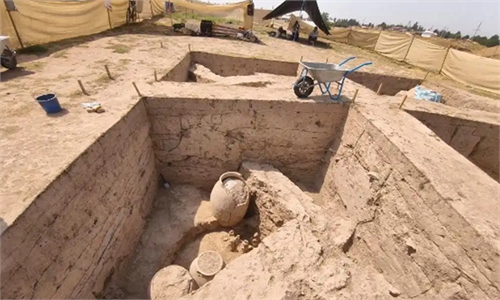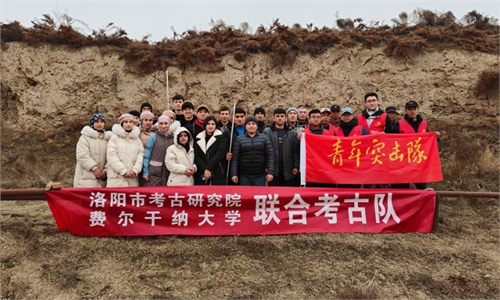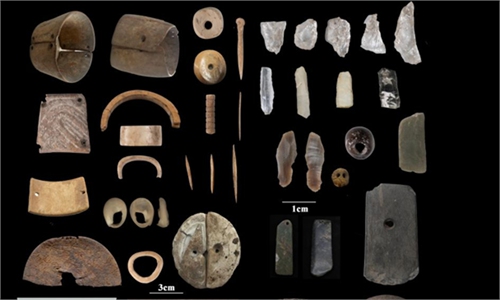ARTS / CULTURE & LEISURE
China-Central Asia joint archaeological teams sow seeds of cultural connection
Digging deeper than artifacts
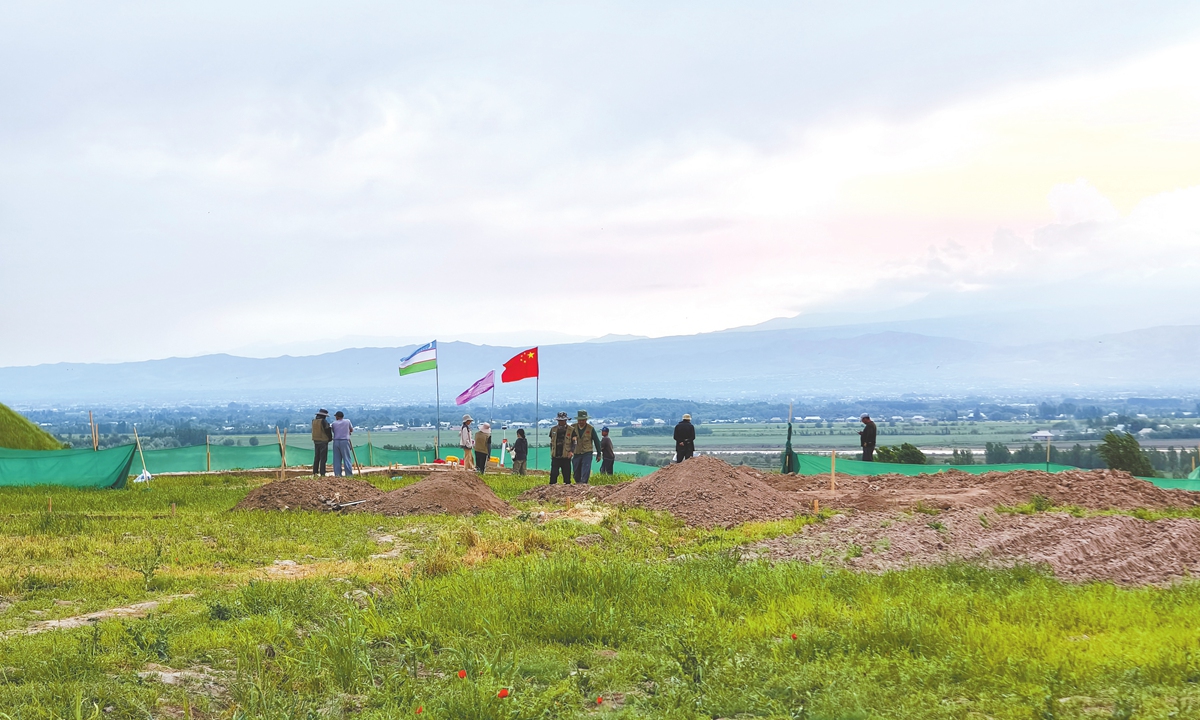
Archaeologists from the China-Uzbekistan joint archaeological team conduct an excavation on the Chinortepa ruins site in Uzbekistan in April 2024. Photos: Courtesy of Tang Yunpeng
On a quiet stretch of land just 300 meters west of Kazakhstan's Issyk State Historical and Cultural Reserve-Museum, history whispers beneath the soil. The site, known as the Issyk burial mound, dates back to around the third century BC and holds treasures not just of ancient artifacts, but also of modern collaboration. This June, a team from the Shaanxi Provincial Institute of Archaeology returned to this historical site, joining hands with Kazakh archaeologists for a new round of excavations. But their work goes far beyond the trenches—they are planting seeds of cultural exchange and igniting curiosity about archeology and Chinese culture among the local people.
Ding Yan, the Chinese team leader of the joint archaeological mission, told the Global Times that excavation efforts have unearthed more than 700 ancient tombs in dozens of burial sites, where a variety of cultural relics such as bone and stone objects were discovered, around the Rahat site. "These discoveries are visible, but the human and cultural connections we foster during the collaboration are invisible yet equally important," said Ding.
Meanwhile, in Uzbekistan, Tang Yunpeng, an archeologist with the Collaborative Research Center for Archeology of the Silk Roads based in Xi'an, Northwest China's Shaanxi Province, and a part of the joint archaeological team, has guided local students to visit the Chinortepa site, which have been silent for a thousand years along the ancient Silk Road, telling them stories about the conservation of cultural relics and friendship among archaeologist from the two countries. In Tang's view, his team's efforts not only advance academic research, but also contribute to mutual understanding between China and Central Asia.
Over the past decade, Chinese archaeologists have collaborated with their counterparts in over 10 countries along the Silk Road, conducting more than 70 archaeological and cultural heritage preservation projects. These include the establishment of the China-Uzbekistan joint archaeological team, the China-Tajikistan joint archaeological team, and the China-Kazakhstan joint archaeological team, the People's Daily reported on November 20, 2024.
Each project represents a step forward in rediscovering and preserving the shared history of the Silk Road—a history that shaped the cultures and identities of people across the region. These collaborative efforts are not just academic; they awaken a sense of historical pride and emotional connection among the people of China and Central Asia.
Beyond the excavation
When the Chinese archaeological team left Kazakhstan in 2024, one of their neighbors gave them a heartfelt farewell gift: A steaming hot local specialty—oil cakes. "This neighbor, a history teacher, often brought his students to visit our archaeological site to learn," Ding said. "Whenever we faced difficulties, he was always eager to help. On the day we left, he even helped us carry our luggage and load the car."
During the summer vacation, a group of young local students came to the archaeological site to work part-time. They came from different majors, including medicine and law. Ding and his colleagues often chatted with the students during breaks. Ding said that gradually, the students developed a strong interest in Chinese culture. They were no longer just focused on their work, but more willing to learn about the civilization's history behind the artifacts unearthed at the archaeological site.
"When local residents are reminded of the significance of their civilization through these ancient ruins and cultural relics, a deep sense of belonging and cultural pride wells up within them," said Tang, reflecting on his interactions with Uzbek locals.
After visiting the excavation site of an ancient tomb dating back 3,500 years in Uzbekistan, the head of a nearby village expressed to Tang his astonishment at the rich history of his hometown, reinforcing his belief in the significance of the land chosen by their ancestors. "This realization serves as powerful evidence that our joint archaeological projects are revitalizing local culture," Tang observed.
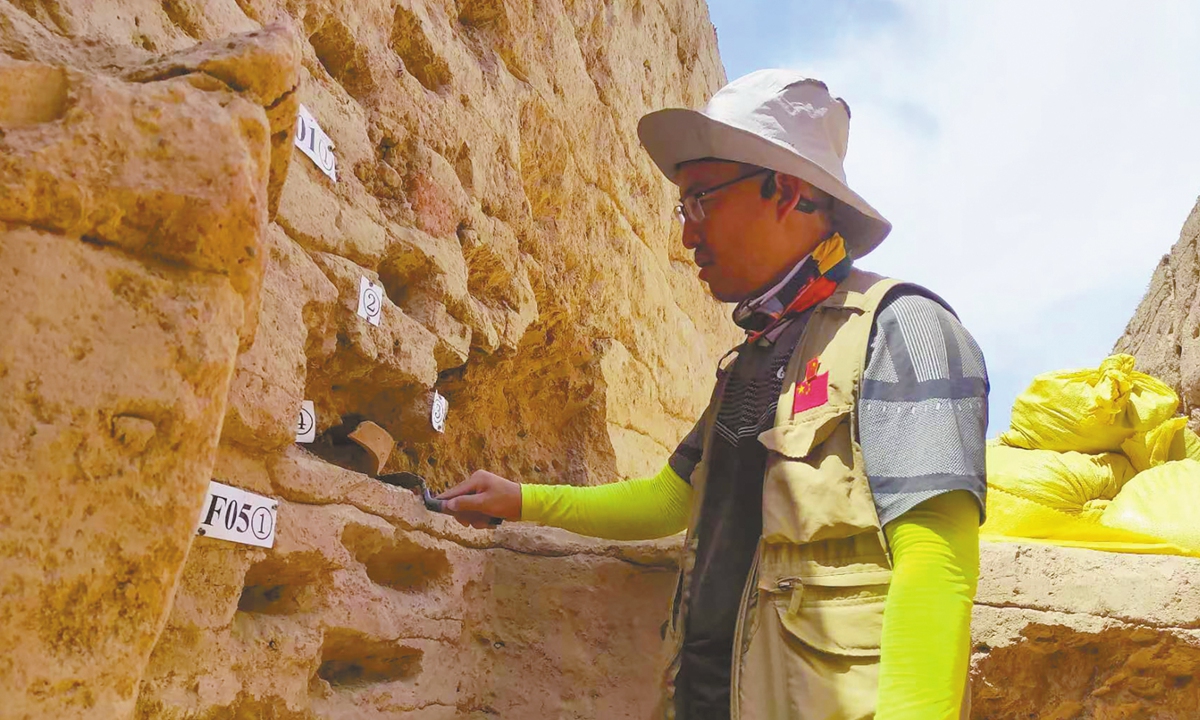
Archaeologist Tang Yunpeng collects samples at the Chinortepa ruins site.
Shared future built on heritages
When he took a vehicle to the archaeological site in Uzbekistan with local archaeologist one afternoon in 2019, Tang and his team accidentally discovered some signs of the Chinortepa site that offers precious first-hand materials for research on the Kushan Empire and tried to protect the site from damage by a local brickyard with the help of local researchers.
This is a story Tang shared with over 40 students from local primary schools and universities, who visited the archaeological site during the 2025 International Museum Day. He also recounted how the China-Uzbekistan joint archaeological team has been conducting scientific surveys and excavations at the site since 2019, highlighting some of their most significant discoveries. Led by the archaeologists, the students entered the excavation area, closely examined the ruins and artifacts, and genuinely experienced the rich history and grandeur of the Silk Road.
"This activity is an important part of public archaeology organized by the Collaborative Research Center for Archeology of the Silk Roads. As China-Uzbekistan joint archaeological efforts continue to produce impressive results, the real key to reviving these cultural relics is fostering a sense of cultural identity," said Tang. Standing on the rammed earth foundation, the students felt a deep connection to history. This hands-on approach to learning went beyond traditional textbooks, providing a truly immersive experience.
Besides promoting public archeology among the younger generations, Tang and his team are also empowering local archaeologists with advanced techniques and tools such as plant and animal identification, ancient DNA analysis, and residue testing. The joint lab for archaeology has entered its second phase of development. Chinese archaeologist emphasize the philosophy of "teaching to fish," ensuring that local archaeologists are equipped to implement these methodologies.
Ding noted that as these joint archaeological projects continue to flourish, their impact extends far beyond the artifacts unearthed. They are planting seeds—not just of knowledge but of cultural connection, respect, and dialogue.
This is the true power of archaeology—not just in uncovering the past but in inspiring the present and shaping the future.

